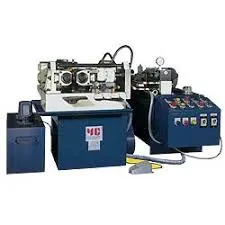
-
 Afrikaans
Afrikaans -
 Albanian
Albanian -
 Amharic
Amharic -
 Arabic
Arabic -
 Armenian
Armenian -
 Azerbaijani
Azerbaijani -
 Basque
Basque -
 Belarusian
Belarusian -
 Bengali
Bengali -
 Bosnian
Bosnian -
 Bulgarian
Bulgarian -
 Catalan
Catalan -
 Cebuano
Cebuano -
 Corsican
Corsican -
 Croatian
Croatian -
 Czech
Czech -
 Danish
Danish -
 Dutch
Dutch -
 English
English -
 Esperanto
Esperanto -
 Estonian
Estonian -
 Finnish
Finnish -
 French
French -
 Frisian
Frisian -
 Galician
Galician -
 Georgian
Georgian -
 German
German -
 Greek
Greek -
 Gujarati
Gujarati -
 Haitian Creole
Haitian Creole -
 hausa
hausa -
 hawaiian
hawaiian -
 Hebrew
Hebrew -
 Hindi
Hindi -
 Miao
Miao -
 Hungarian
Hungarian -
 Icelandic
Icelandic -
 igbo
igbo -
 Indonesian
Indonesian -
 irish
irish -
 Italian
Italian -
 Japanese
Japanese -
 Javanese
Javanese -
 Kannada
Kannada -
 kazakh
kazakh -
 Khmer
Khmer -
 Rwandese
Rwandese -
 Korean
Korean -
 Kurdish
Kurdish -
 Kyrgyz
Kyrgyz -
 Lao
Lao -
 Latin
Latin -
 Latvian
Latvian -
 Lithuanian
Lithuanian -
 Luxembourgish
Luxembourgish -
 Macedonian
Macedonian -
 Malgashi
Malgashi -
 Malay
Malay -
 Malayalam
Malayalam -
 Maltese
Maltese -
 Maori
Maori -
 Marathi
Marathi -
 Mongolian
Mongolian -
 Myanmar
Myanmar -
 Nepali
Nepali -
 Norwegian
Norwegian -
 Norwegian
Norwegian -
 Occitan
Occitan -
 Pashto
Pashto -
 Persian
Persian -
 Polish
Polish -
 Portuguese
Portuguese -
 Punjabi
Punjabi -
 Romanian
Romanian -
 Russian
Russian -
 Samoan
Samoan -
 Scottish Gaelic
Scottish Gaelic -
 Serbian
Serbian -
 Sesotho
Sesotho -
 Shona
Shona -
 Sindhi
Sindhi -
 Sinhala
Sinhala -
 Slovak
Slovak -
 Slovenian
Slovenian -
 Somali
Somali -
 Spanish
Spanish -
 Sundanese
Sundanese -
 Swahili
Swahili -
 Swedish
Swedish -
 Tagalog
Tagalog -
 Tajik
Tajik -
 Tamil
Tamil -
 Tatar
Tatar -
 Telugu
Telugu -
 Thai
Thai -
 Turkish
Turkish -
 Turkmen
Turkmen -
 Ukrainian
Ukrainian -
 Urdu
Urdu -
 Uighur
Uighur -
 Uzbek
Uzbek -
 Vietnamese
Vietnamese -
 Welsh
Welsh -
 Bantu
Bantu -
 Yiddish
Yiddish -
 Yoruba
Yoruba -
 Zulu
Zulu
Advanced Hydraulic Threading Machine for Precision Pipe Fabrication and Industrial Applications
The Evolution and Impact of Hydraulic Threading Machines
In the realm of industrial manufacturing and construction, the threading of pipes and bolts is a critical process. It ensures optimal connection and integrity in various assemblies, from residential plumbing to massive industrial structures. Among the numerous tools developed for this task, the hydraulic threading machine stands out as a particularly efficient and effective solution. Its invention and evolution have revolutionized how threading operations are performed, leading to improved efficiency, safety, and precision.
Hydraulic threading machines utilize the power of hydraulic systems to perform threading operations. This technology harnesses the mechanical advantage of fluids under pressure to create significant force, allowing the machine to effortlessly thread even the toughest materials, such as stainless steel and heavy-duty PVC. The remarkable force produced by hydraulic systems reduces the physical effort required by the operator, making the process safer and less labor-intensive.
The Evolution and Impact of Hydraulic Threading Machines
One of the most notable advantages of hydraulic threading machines is their ability to accomplish tasks with superior precision. The consistency and control offered by hydraulic systems reduce the potential for human error and ensure high-quality threads every time. This precision is crucial in industries where tolerances are tight, and any imperfection could lead to costly failures or safety hazards.
famous hydraulic threading machine

Furthermore, hydraulic threading machines cater to a variety of threading standards, making them versatile tools in any workshop. Whether it’s NPT, BSP, or metric threading, modern hydraulic machines are equipped with quick-change chuck systems that allow operators to switch between different threading configurations with ease. This adaptability not only saves time but also increases productivity by minimizing downtime during switching processes.
In terms of safety, hydraulic threading machines have several built-in features that protect both the operator and the equipment. Many machines are designed with enclosed threading areas to guard against flying debris, and automatic feeds help reduce the likelihood of accidents caused by operator fatigue. Additionally, the lower physical demands of hydraulic systems lessen the risks associated with repetitive strain injuries, enabling a safer working environment.
The impact of hydraulic threading machines extends beyond just efficiency and safety; they have also contributed significantly to the sustainability of industrial operations. By streamlining the threading process, these machines help reduce waste materials and energy consumption. Their increased accuracy ensures that fewer defective products are produced, which not only conserves resources but also improves overall profitability for businesses.
As industries continue to expand and evolve, the demand for hydraulic threading machines is expected to grow. Advances in technology, such as automation and smart machine integration, are likely to foster even more enhancements in their design and functionality. The future may see machines that can diagnose issues autonomously, provide real-time data analytics, and even integrate seamlessly with other manufacturing processes.
In conclusion, hydraulic threading machines represent a significant advancement in the threading process, offering numerous benefits in terms of efficiency, precision, safety, and sustainability. As technology continues to advance, these machines will undoubtedly play an even more critical role in shaping the future of manufacturing and construction industries. Their evolution is not just about improving productivity; it’s about redefining standards and setting new benchmarks for quality and safety in industrial operations.
